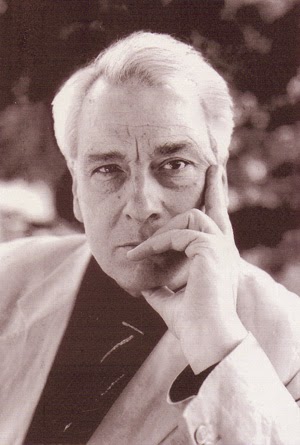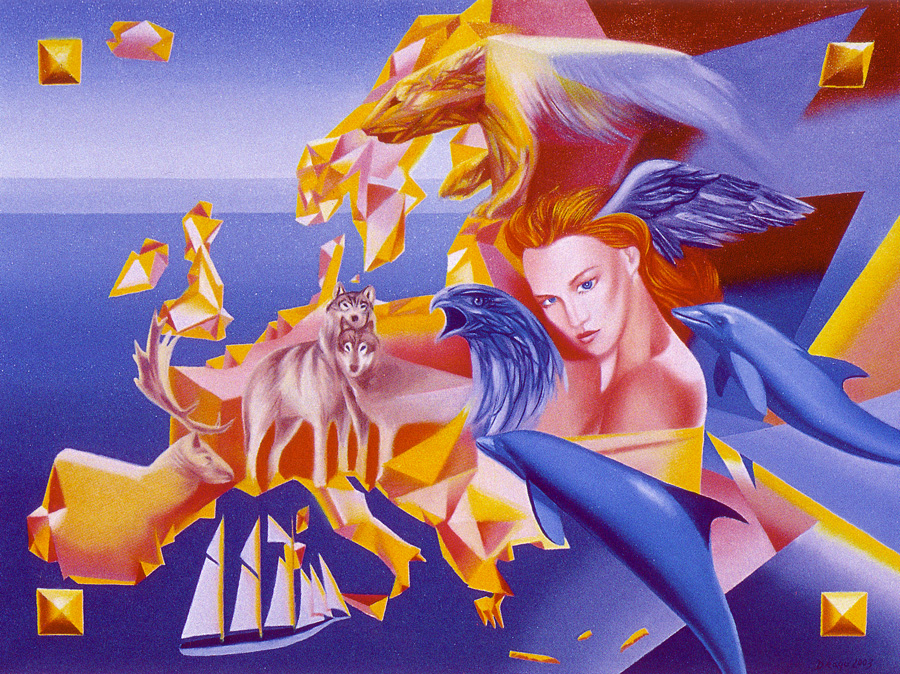Post by Jon Do on Dec 12, 2014 18:15:40 GMT -5

Dragoš Kalajić was a Serbian artist, philosopher and writer.
He wrote for the magazine Pogledi.
Dragos Kalajić studied art at the Roman Accademia delle Belle Arti. He graduated in 1965 with the highest marks in his class. After completing his training he began living and working in Belgrade and Rome. Kalajić was an accomplished writer beside being an artist. He was a member of the Association of Writers of Serbia, the Association of Fine Artists of Serbia, and the Association of Writers of Russia. His achieved considerable success in the many fields that he ventured into, from literature to visual arts to the history of art and publishing. He was friends with many greats in the fields of art, literature, films and philosophy, such as Julius Evola, Ezra Pound, Aleksandr Dugin, Giorgio de Chirico, Gualtiero Jacopetti and many others.
--
In the Titoist era there was no open propagation of fascist ideas, but there was a marginal social circle of very young people, formed very early on in the early 50s that was anti-communist and reactionary in its character, but in a covert and ‘apolitical’ way. These youth were mostly sons and daughters of the pre-war Belgrade bourgeois who despised “the communist peasants who came down from the mountains to their city”. This circle was not political in any active and serious way and their activities consisted mainly of partying in Belgrade flats, but some of them studied texts of the anti-communists they could find (for example, the texts of Ernst Junger that they found within the works of his Marxist critics). A well known artist group, Mediala, was formed in 1953 from people of these circles. In the eighties, many members of this group became openly nationalist, anti-communist, monarchist and fascist. In this circle, Dragoš Kalajić formed his views, himself also a painter, who in the 1990s became the leader of the intellectual fascist circle known as the Serbian New Right. In the 1960s he went to study art in Rome where he moved in neo-fascist circles and personally met Julius Evola, the ‘neo-fascist Marcuse’.
In the early nineties an unofficial intellectual group known as the Serbian New Right was founded. The intellectual leader of this group was Dragoš Kalajić, and its aim was introducing the thought of neo-fascist currents, such as the French Nouvelle Droite of Alain de Benoist, and the Russian neo-Eurasianist movement of Alexander Dugin. Also a major influence on this group were the thinkers of the so called “conservative revolution” like Ernst Junger and Julius Evola. In fact, fascists who had ideas a little bit different from the official fascist ideas dominant in the era of fascism in Germany and Italy were now presented as non-conformists because of this. Although one of the more important members of this group, Dragoslav Bokan (a film director by education), was the leader of one of the paramilitary units that fought in the war, the White Eagles (also the name of the youth organization of Zbor), the activities of members of this current were mostly in the realm of ideology, writing, translating, and publishing books and magazines which continued after 2000. with new magazines and the publishing house Ukronija. The influence of this group and the authors that they introduced were important; they had influence in all structures of new Serbian fascism from neo-nazi thugs in the street to the SRS. One of the especially important influences was the Russian neo-fascist Alexander Dugin who became a part of the Russian mainstream since Putin came to power.
The Hyperboreans were people who lived "beyond the North Wind". The Greeks thought that Boreas, the god of the North Wind (one of the Anemoi, or "Winds") lived in Thrace, and therefore Hyperborea indicates a region that lay far to the north of Thrace.
Helena Blavatsky, René Guénon and Julius Evola all shared the belief in the Hyperborean, polar origins of Mankind and a subsequent solidification and devolution. According to these esoterists, Hyperborea was the Golden Age polar center of civilization and spirituality; mankind does not rise from the ape, but progressively devolves into the apelike condition as it strays physically and spiritually from its mystical otherworldly homeland in the Far North, succumbing to the demonic energies of the South Pole, the greatest point of materialization.
Hyperborean Realism:


Along with Thule, Hyperborea was one of several terrae incognitae to the Greeks and Romans, where Pliny the Elder and Herodotus, as well as Virgil and Cicero, reported that people lived to the age of one thousand and enjoyed lives of complete happiness. According to Herodotus (4.13), Aristeas had written a hexameter poem (now lost) about a journey to the Issedones. Beyond these lived the one-eyed Arimaspians, further on there were gold-guarding griffins, and beyond these the Hyperboreans. Hesiod mentioned the Hyperboreans, Herodotus reported, "and Homer also in the Epigoni, if that be really a work of his". Also, the sun was supposed to rise and set only once a year in Hyperborea, which would place it at the North Pole. In maps based on reference points and descriptions given by Strabo, Other descriptions put it in the general area of the Ural Mountains.




Baron Julius Evola once said, looking Dragos in the eyes:
“You will renew the Roman Idea”
“You will renew the Roman Idea”

